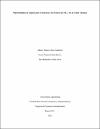Oportunidades de negocio para el maracuyá en el marco del TLC con la Unión Europea
Resumen
En la última década la integración económica de Colombia, a través de la suscripción de acuerdos comerciales, ha llevado a los gobiernos de turno al cambio de estrategias para aprovechar las ventajas del comercio internacional. Concretamente, el acuerdo suscrito con la Unión Europea, ha generado importantes cambios para la producción y comercialización de bienes y servicios, en razón a las nuevas estrategias de competitividad surgidas en el plano de la globalización; desde esta perspectiva (de la competitividad), la presente monografía explora diversas hipótesis referentes a las oportunidades de negocio para el maracuyá en el marco del TLC con la Unión Europea dado su factor diferencial y la marcada preferencia del mercado europeo por este tipo de productos, considerados históricamente en esa latitud como exóticos. Lo anterior, a través del cálculo de cuatro índices: la participación de producción por departamentos, el índice de Herfindahl-Hirschman (IHH), el índice de Ventaja Comparativa Revelada (IVCR) y la tendencia del crecimiento de las exportaciones de Colombia a la Unión Europea, que permiten analizar el comportamiento de participación y competitividad del cultivo de maracuyá frente al Acuerdo comercial con La Unión Europea. Estos indicadores que nos permiten llegar a la conclusión de que la producción de maracuyá ha tenido un incremento importante desde 2013, destacando a los departamentos de Antioquia, Meta, Huila, Arauca y Valle, como los mayores productores de la fruta., así mismo el nivel de las exportaciones tuvo un crecimiento importante hacia el continente europeo entre 2013 y 2019.
Abstract
In the last decade, the economic integration of Colombia, through the signing of trade agreements, has led governments to change strategies to take advantage of the advantages of international trade. In particular, the agreement signed with the European Union has generated important changes for the production and marketing of goods and services, due to the new competitiveness strategies that have emerged in the context of globalization; from this perspective (competitiveness), the present monograph explores various hypotheses concerning the business opportunities for cashew fruit under the FTA with the European Union given its differential factor and the strong preference of the European market for this type of product, historically considered at that latitude to be exotic. This, through the calculation of four indices: the share of production by departments, the Herfindahl-Hirschman index (IHH), the Revealed Comparative Advantage Index (IVCR) and the trend of growth of exports from Colombia to the European Union, which allow an analysis of the participation and competitiveness of passion fruit cultivation vis-à-vis the Trade Agreement with the European Union; indicators that allow us to conclude that the production of passion fruit has had a significant increase since 2013, highlighting the departments of Antioquia, Meta, Huila, Arauca and Valle, as the largest producers of fruit. the level of exports increased significantly to the continent of Europe between 2013 and 2019.
Palabras clave
Collections
 This work is licensed under a Creative Commons Reconocimiento-NoComercial 4.0.
This work is licensed under a Creative Commons Reconocimiento-NoComercial 4.0.

